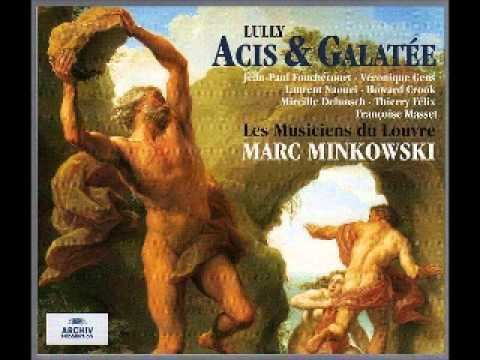First performance 6 September 1686 Language French | ||
 | ||
Similar Alceste, Phaëton, Amadis, Persée, Cadmus et Hermione | ||
Lully acis et galat e 1686 ouverture ballet suite marc minkowski
Acis et Galatée (Acis and Galatea) is an opera by Jean-Baptiste Lully. Unlike most of his operas, which are designated tragédies en musique, Lully called this work a pastorale-héroïque, because it was on a pastoral theme and had only three acts (plus a prologue) compared to the usual five. Otherwise, there is little musically or dramatically to distinguish it from Lully's tragédies.
Contents
- Lully acis et galat e 1686 ouverture ballet suite marc minkowski
- Jean baptiste lully acis et galat e ouverture
- Performance history
- Synopsis
- Selected recording
- References
Lully did not work with his usual collaborator, Philippe Quinault, because he was no longer doing theatrical work. Jean Galbert de Campistron wrote the French libretto after the story in Ovid's Metamorphoses. The same story was also to inspire a dramatic work by Handel, Acis and Galatea. The opera was commissioned by Louis Joseph, duc de Vendôme in honor of Louis, le Grand Dauphin.
Jean baptiste lully acis et galat e ouverture
Performance history
It was premiered by the Académie Royale de Musique (Paris Opera) at the Château d'Anet on 6 September 1686 (without machines) and later at the Théâtre du Palais-Royal in Paris on 17 September 1686.
Synopsis
The story is of a love triangle between the three main characters—Acis, Galatea, and Poliphème. Poliphème murders Acis out of jealousy, but Acis is revived and turned into a river by Neptune.
